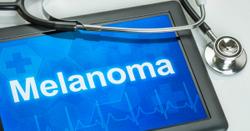- About Us
- Advertise / Support
- Editorial Board
- Contact Us
- CancerNetwork.com
- TargetedOnc.com
- OncLive.com
- OncNursingNews.com
- Terms & Conditions
- Privacy
- Do Not Sell My Information
- Washington My Health My Data
© 2025 MJH Life Sciences™ and CURE - Oncology & Cancer News for Patients & Caregivers. All rights reserved.
Types of Skin Cancer and Their Treatments
Ashley Chan, assistant editor for CURE®, has been with MJH Life Sciences since June 2023. She graduated with a B.A. in Communication Studies from Rowan University. Outside of work, Ashley enjoys spending time with family and friends, reading new novels by Asian American authors, and working on the manuscript of her New Adult novel.
There are multiple types of skin cancer and treatments to treat the disease, too, explained an expert.
Skin cancer is the most common type of cancer in the United States, according to the Centers for Disease Control and Prevention. From genetics to the sun, there are many contributing risk factors for skin cancer.
According to Dr. Beth Goldstein, a dermatologist who specializes in skin cancer at the Central Dermatology Center in Chapel Hill, North Carolina, there are several types of three common skin cancers: basal cell carcinomas, squamous cell carcinoma and melanoma. She notes that more than 80% of skin cancer cases are likely to be basal cell carcinomas, although there are also several million cases of squamous cell carcinoma every year. Of the three common skin cancers, Goldstein said that both melanoma and squamous cell carcinomas are an aggressive form of skin cancer.
“With basal cell carcinomas, those are predominantly related to sun exposure, and people often have more than one of these. So if you have one, you have a 50% chance of getting another one in the next three to five years,” said Goldstein. “So many of my patients will say, ‘I hope not to see you again,’ I'm like, ‘that is wishful thinking.’ Because if you tend to have one of these, you tend to have more than one.”
Goldstein emphasized that check-ups are necessary, especially for patients who already had skin cancer before. “It doesn't mean you're going to have three or four every year, but that you should keep regular checkups and know what to look for. So you can monitor your skin to make sure you detect them as soon as you can,” she said.
She also noted that patients who have once had squamous cell carcinomas are more likely to receive a diagnosis of both squamous cell carcinoma and melanoma, which often develop from moles.
“There's about a 12% lifetime chance of getting another melanoma. So (doctors) do recommend follow up at least yearly. And depending on your risk, pretty much from the time you have your first diagnosis on.”
Skin Cancer Treatments
Treatments for skin cancers also differ among each type and the location of the cancer. Goldstein explained how there are three common types of treatments: surgery, scrape and burning, and non-surgical options, such as topical chemotherapy and radiation.
Regarding surgery, Goldstein explained, “if (the cancer is) located in areas where you really have to conserve tissue like the head and neck, the hands, the feet the shins, then we often will treat these with MOHs surgery.” She also described a technique called conventional frozen section surgery, in which the process is “more like a loaf of bread,” where the dermatologist will analyze small sections or “slices.”
With surgery, Goldstein determined that there is a high cure rate of 99% for most basal cell carcinomas.
As for the scrape and burning technique, Goldstein established that this technique is similar to excision, which is a procedure that cuts out the tumor. However, this type of treatment is not recommended for aggressive types of basal cell carcinomas, and does not have a good cure rate, said Goldstein.
Topical treatments, such as chemotherapy and radiation, are used depending on the location of the tumor, the tumor type and the patient’s health, Goldstein noted. She explained that radiation can benefit patients who are not considered a good candidate for surgery.
“One (type of radiation) is called superficial radiation where it just goes about three millimeters into the skin. And that is really indicated more for people who aren't good surgical candidates. … (It is used for) people (who are) very frail, on blood thinners or (if their) skin (is) very thin. They maybe can't handle wound care; maybe they're at high risk for infection. And so, for those patients, sometimes radiation is used.”
For more news on cancer updates, research and education, don’t forget to subscribe to CURE®’s newsletters here.
Related Content:



